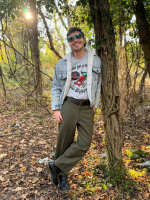Baltimore’s City Council finally had a chance to directly hear from Mayor Brandon Scott’s Office directly about his plan to use hundreds of millions of dollars in drug manufacturer settlement money to address the city’s opioid overdose issue Wednesday.
The city has not been able to fully divulge its full vision for the more than $400 million, and possibly more, it’s won from companies like CVS and Cardinal Health, because it’s been tied up in litigation and did not want to jeopardize the case.
Now, with a vast majority of the legal proceedings finished, the city council is finally able to comb through Scott’s plan, which aims to reduce opioid overdoses by 40% over the next 15 years.
“This plan is a two-year plan, but our long-term goals are 15 years with the scope of the restitution fund,” said Sara Whaley, Baltimore executive director for overdose response during a hearing of the city’s Health and Environment Committee. “We will be checking and regularly adapting the plan as needed, conferring with the data to make sure that our efforts are having the outcomes that we are aiming for, and adjust when necessary.”
Councilmembers seemed mostly concerned about hearing how the Mayor will address the issue as soon as possible and not relying on long-term solutions.
“There has to be an additional sense of urgency with that interagency collaboration and we have to come to some sort of connection interagency coordination yesterday,” said Committee Chairwoman Phylicia Porter.
The Mayor’s Office’s response was that some programs are already in motion, at the same time, the city now has $87 million earmarked in restitution funds to give out as grants to addictions services and overdose treatment.
Additionally, the city put out a revised plan last week, honing in on specific items that will reduce overdoses and addiction.
Those include increasing access to harm reduction services and mental health services like naloxone and mobile vans that offer care.
Other parts of the strategy aim to dismantle silos in the continuum of care by coordinating with state and federal efforts to reduce illegal drugs and enhancing access to data to allow the most precise work possible.
The plan also works to reduce stigma and barriers to care, improve substance abuse treatment and develop effective non-emergency response systems that reduce contact with law enforcement and increase interactions with mental health professionals.
The strategy is based on cutting edge research and best practices from throughout the globe.
Baltimore will conduct four listening sessions on the plans in July at locations most impacted by overdoses.
The city council will also conduct three more hearings.
While the plan is getting praise from medical professionals, some residents who testified at the hearing were cool to it.
“I even had a basil plant stolen from the front of my yard,” said Jody Jackson, a resident of Laurel Park. “The druggies are bent halfway over falling in the street.”
Much of the resident testimony concerned needles on the ground and decreased property values, but little solutions for solving the issue of addiction and overdose.
Naloxone has been proven to be the best way to reverse overdoses.
According to the Centers for Disease Control and Prevention, needle exchange and syringe service programs increase the safe disposal of needles, give people better access to addiction services and help save lives.









